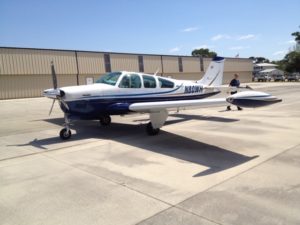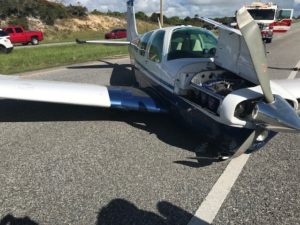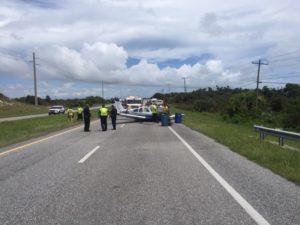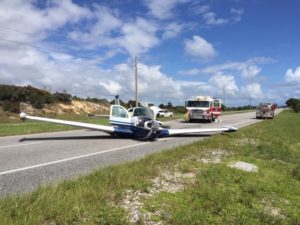

By Dr. William (Bill) Hinsley
BPT Recurrent Pilot; Former Air Force Captain; 3,150+ hours
I have approximately 3,150 hours. I’ve only flown three airplanes and two of those were a 1979 Cessna 172 Skyhawk and the F33A Bonanza. Most of that time is on the Bonanza. I put 2,300 hours of flying time on the Bonanza and had it for 21 years. It was pretty tricked out, as I essentially rebuilt it.
I attended a Bonanza pilot training program, where Hank Canterbury was one of the top gun instructors. I took what he taught to heart. Every time I would go flying, I would remember the caveats and what he taught. That’s what saved my life.
Hank taught a seminar called Departure Emergencies: how to react if you have an emergency on departure. Hank said that one of the most dangerous parts of flying is taking off because you are low to the ground, you’re going slow and you have a high angle of attack. If you have an engine failure, you have to react very quickly to get the airplane under control and to be able to glide because you have no airspeed.
That’s essentially what happened to me.
I was low and I was going slow because we were taking pictures of golf courses. My golf coach and his son were with me.
That’s when the engine failed.
I didn’t have much altitude — and I had almost no glide because I was going very slowly. The only option I had was to get to highway US1, even though it was surrounded by high-tension power lines and is heavily traveled.
The problem I had was, I was west of the highway, so I had to go to the shortest distance to the highway, which was due east. Then, I had to make a right turn to go with the flow of traffic. I had no altitude and no airspeed, but I still had to make a 90-degree turn. I was able to do it and get the airplane stopped before hitting a guard rail or ditch or trees. I was very fortunate.


My main tip? Seek the best flight training you can obtain. I know a lot of pilots that — once they get their license — think they know everything they need to know. I don’t go with that because I feel like I want to know more. It’s a matter of risk and reward. Basically, the aircraft owner has to have more weight on the reward side to keep being able to deal with the risk side. Consistent flight training balances the scale, in my opinion, more to the reward side of the risk vs. reward ratio.
In a non-threatening environment of constructive criticism, BPT helps you be a better pilot. The aircraft is not a toy: you have to be able to command it and fly it proficiently with knowledge. That’s what gives you comfort. I knew that when the engine exploded, Hank was with me because I knew exactly what to do. It was like game on, let’s do it.
Training is the main thing and the instructors that have the capabilities, like General Canterbury, make it unique and very special.



